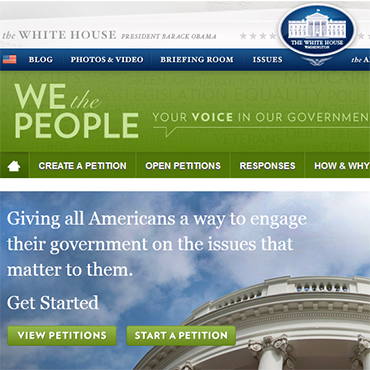We The People expands its reach

With a new API, citizens can now import petition signatures from other websites to the official White House petition site.

The White House is making it easier to transfer electronic signatures from other websites to its We The People petition page in an effort to spur greater participation.
A common request for the petition page, according to a Nov. 4 blog post by Ezra Mechaber, associate director of online engagement for the White House's Office of Digital Strategy, has been a "strong desire from our users to be able to submit signatures and petitions from other sites and still get an official response."
The We The People site, introduced two years ago, allows the public to petition White House policy experts on specific issues. Mechaber said since the site began, more than 10 million users have signed nearly 300,000 petitions there.
Mechaber said the White House is developing an application programming interface (API) that will allow signature acceptance from other sites. The number of signatures per petition is critical. Once a petition is posted on the site, petitioners have 30 days to get 100,000 signatures to get a response from the White House. Responses don't necessarily entail policy shifts – a presidential endorsement of Texas secession was not forthcoming, for example, despite more than 125,000 signatures endorsing the proposal -- but filings can bring issues to the White House's attention.
The Write API, said Mechaber, will allow individuals and organizations to collect signatures from their own platforms and submit them to We The People without requiring users to visit the official site.
All of those signatures, he said, would contribute toward the signature threshold needed for an official White House response.
The White House convened a conference call on Nov. 4 to explain how the API will work and to give potential developers a look at the beta platform.
Building out the Write API, said Mechaber, will make the site more accessible and builds on the Read API released this spring. The Read API opened up the site's data for analysis, allowing anyone to access the public data it made available and package it in customized platforms.
NEXT STORY: What's happening with Obamacare?


